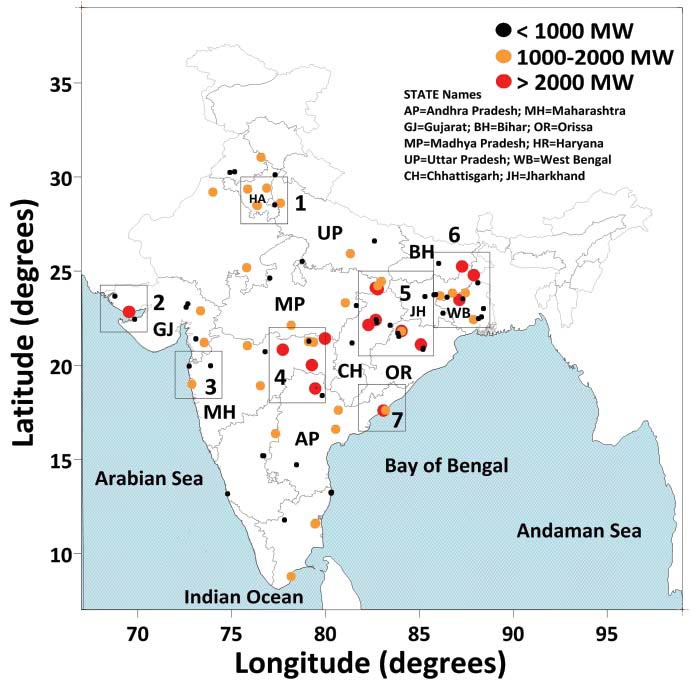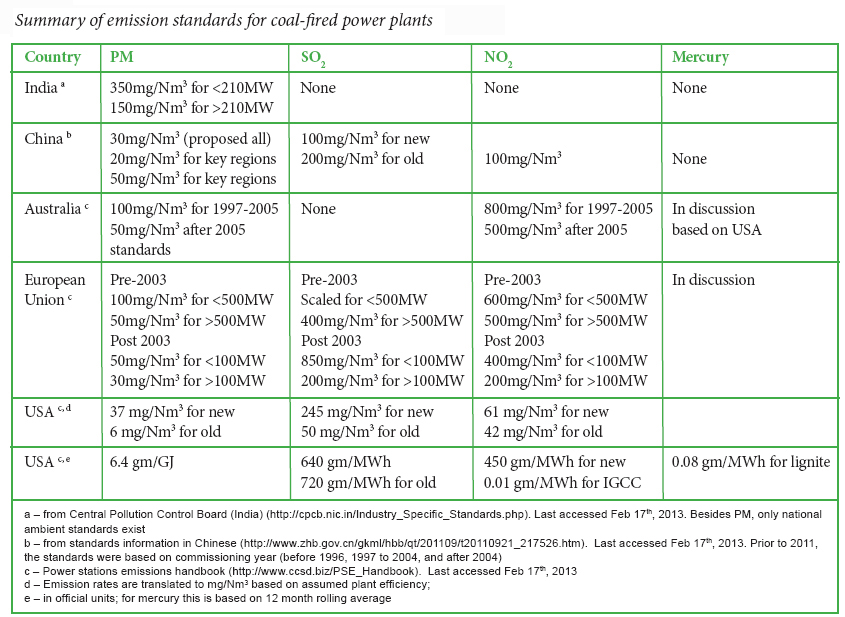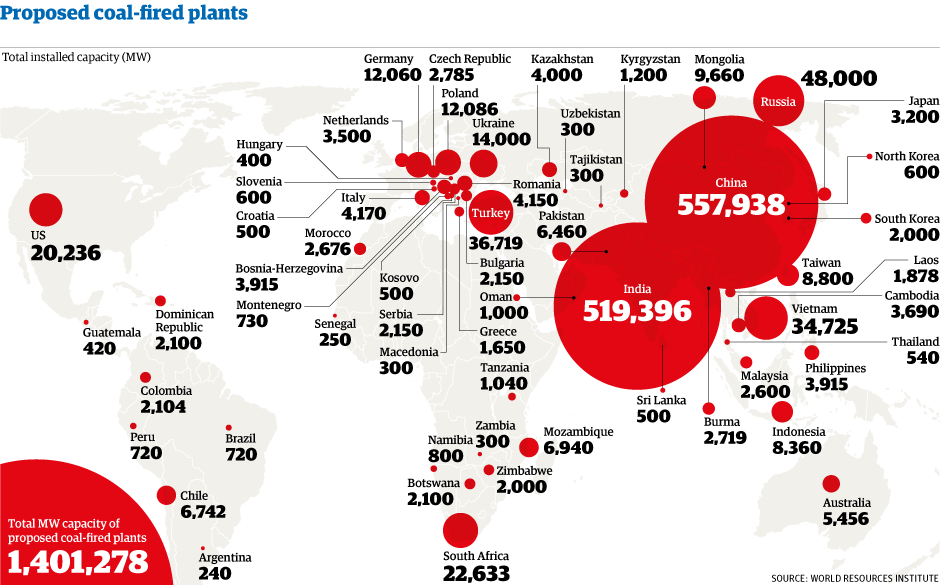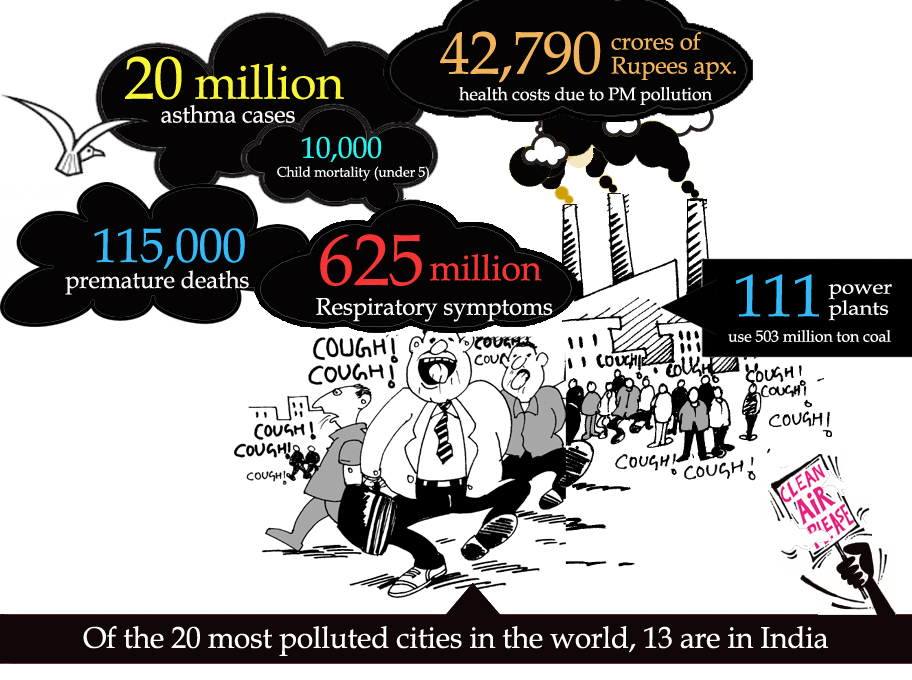Coal accounts for 41 per cent of the world’s electricity generation. At approximately 210 gigawatt (GW), India is the fifth largest producer of electricity in the world, of which 66 per cent comes from coal.
 Based on a report by Urban Emissions, a think tank, in partnership with the Conservation Action Trust and Greenpeace India for the operational period of 2011-12.
Based on a report by Urban Emissions, a think tank, in partnership with the Conservation Action Trust and Greenpeace India for the operational period of 2011-12.
Health impact

About 80,000 to 115,000 premature deaths and more than 20 million asthma cases from exposure to total PM10 (particulate matter of 10 micron diameter or less) pollution have been reported. Coal power plants are a major source of PM10 (particulate matter of 10 micron diameter or less).
Health costs
Monetary cost associated with these health impacts exceeds Rs 16,000 to 23,000 crores (USD $3.3 to 4.6 billion) per year

Health impacts like heart attacks, emergency room visits, hospital admissions, and lost workdays caused by coal-based emissions have been included in the assessment.
Far-reaching effect

Delhi, Haryana, Maharashtra, Madhya Pradesh, Chhattisgarh, the Indo-Gangetic plain, and most of central India bear maximum impact. Trajectory analysis shows the impacts can be observed farther than 50-100 km from the source region.
111 coal-fired power plants, representing a generation capacity of 121 GW have been taken into account.
Unregulated emissions

Emissions standards in India lag behind those implemented in China, Australia, the United States and the European Union. For other key pollutants like sulphur dioxide, nitrogen oxides and mercury, there are no prescribed emissions standards in India 
Global scenario
According to WRI’s estimates, China and India together account for whopping 76 per cent of the proposed new coal power capacities

 How to clean up the act
How to clean up the act
The shocking figures of sickness, premature mortality and resulting financial costs demand quick actions. Few of them could be:
• Tighten emissions standards at the plant level
• Regular environment impact assessments
• Using advanced technologies

